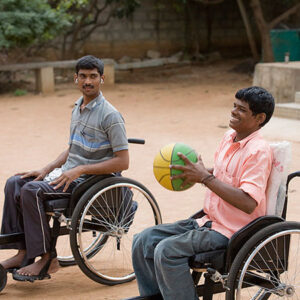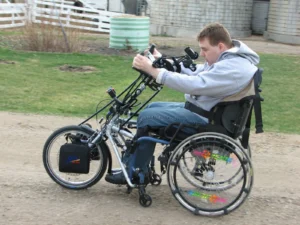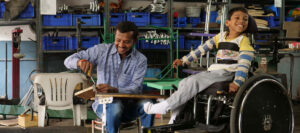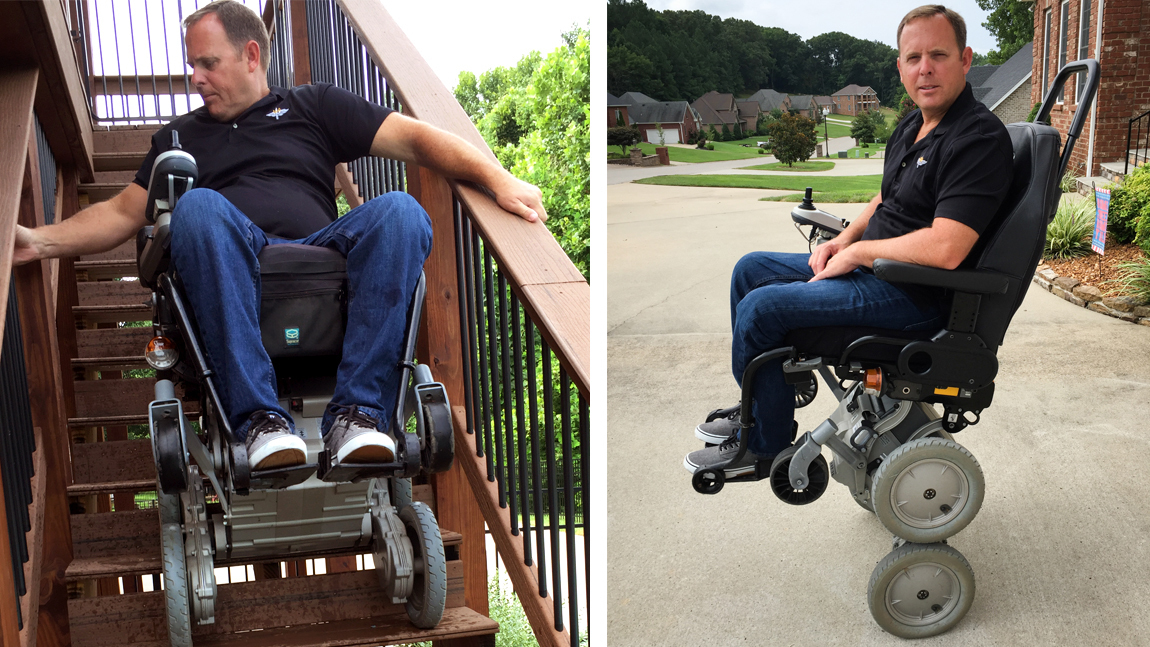People with disabilities in Asia and the Pacific region encounter challenges since it is still expensive and difficult to obtain assistive devices and services.
[SYDNEY] Meeting the requirements of the elderly and those with disabilities in the Asia Pacific area is still difficult due to a shortage of educated employees and limited access to assistive technologies including hearing aids, mobility aids, and eyeglasses.
A 2022 UN report claims that only 3% of low- and middle-income nations have access to assistive technologies. The phrase “assistive technology” refers to a broad range of tools and services that enhance daily functioning while enabling users to live more independently.
“It is exceedingly difficult to guarantee that [assistive technology] users in emerging Asia-Pacific nations have access to both devices and the professional services to fit the equipment.”
According to a recent study, the market for assistive technologies for the elderly and disabled is predicted to grow to US$60.84 billion by 2028. A huge population base and growing knowledge of better healthcare are predicted to cause it to rise there most quickly.
Wesley Pryor, the lead adviser at the Nossal Institute for Global Health at the University of Melbourne in Australia, claims that “the demand for rehabilitation services and assistive technologies is expanding for a variety of reasons.” It entails the shifting prevalence of communicable to non-communicable diseases, as well as the decreasing possibility that elderly individuals will have children or grandchildren to care for them.

Getting the appropriate help
According to Manlapaz, it is a waste of resources if a person does not receive the appropriate help. Devices of higher quality last longer. He claims that a high-quality wheelchair can last up to ten years whereas a cheap wheelchair will only last six months to a year.
Frequently, assisted imports are not user-friendly. According to Setareki Macanawai, the CEO of the Pacific Disability Forum, “rich countries frequently use the Pacific Island countries as dumping grounds for used or unwanted things.” In island nations, “providers need to consult with people with disabilities and their representative organizations and take user demands, pricing, and the infrastructure — for instance, unsealed roads — into account.”
A 2018 research from ATscale, the Global Partnership for Assistive Technology, demonstrated the undeniable advantages of investing in assistive technology for health, social inclusion, and financial gains.
Governments and civil society organizations in the area are implementing policies to increase access to assistive technologies, such as local production of devices.
According to Metta Thippawong, Cooperative Orthotic Prosthetic Enterprise Programme Manager for Lao, “the government [in Lao People’s Democratic Republic] is encouraging devices, such as axillary and elbow crutches, standing frames, and cerebral palsy walkers, to be made locally so they are more affordable and sustainable.” Due to polio paralysis in her lower limbs, she uses a wheelchair.
A local orthopedic component business that was established by the International Committee of the Red Cross two decades ago is currently administered by the Persons with Disabilities Foundation, a government organization, and three nearby Cambodian companies that build regular wheelchairs.
According to Sisary Kheng, department director and Exceed Worldwide country director for Cambodia, “all the devices are made to order by trained and internationally qualified technicians from the National Institute of Social Affairs Department of Prosthetics and Orthotics, which is also training students from 26 the Asia Pacific and African countries.”
“Cambodians now have access to both free and premium titanium prosthetics, whose parts are sourced from top-tier firms. An artificial limb that replaces any limb amputated above the knee costs about US$350 for a transfemoral prosthesis and about US$250 for a transtibial prosthesis due to cheaper labor, according to Kheng.
According to Sawang Srisom, a member of the Senate of Thailand’s subcommittee on disability affairs, about 2.1 million (3.17 percent of the total population) registered Thais with disabilities are entitled to 76 assistive technology products listed in the 2002-launched Universal Coverage Scheme for healthcare.

Wheelchair and Prosthetic devices need
Regarding access to assistive technologies in Thailand, Srisom tells SciDev.Net that “the items can either be borrowed or bought, but most people can keep the items for use as long as they like.” “Wheelchairs and prostheses are in great demand, but there is not enough of a supply to meet demand, which results in lengthy waiting times. A person might never receive one in certain rural and distant places.
Srisom grew up with polio in rural north-eastern Thailand, and he remembers that it wasn’t until he entered secondary school that he was able to operate a tricycle designed for individuals with disabilities. However, his classroom at school was on the second floor, so he had to climb the stairs. He had to drop out of normal education since it became too humiliating and tough.
Similar experiences Shafiq ur Rehman had as a child in Pakistan inspired him to co-found Milestone (Society for Special Persons) with his other disabled companions. “Pakistan had no idea of mobility aids in the late 1970s. My family was pressured by doctors to “repair” my polio-paralyzed legs. I was compelled to use crutches and braces to help me walk. I would simply crawl because it was so terrible.
At the age of 24, while in Japan on a scholarship for a program in disability leadership, Rehman obtained his first wheelchair. “My life changed when I got a lightweight manual wheelchair,”
Compared to 90% of those in high-income countries, only 5% of those in need do so in low- and middle-income countries.
Rehman tells SciDev.Net, “We started with importing used manual wheelchairs from Japan and customizing them to be useful for the local user, and then we moved on to electric wheelchairs with help from the Japan Council on Living Centers.” “At the moment, we produce 5,000 wheelchairs per month for USD 100. In addition, we manufacture canes, walkers, and medical beds. The majority of those employed in our manufacturing facilities have a disability.
The ATscale analysis made clear that there is a shortage of the four most in-demand products: wheelchairs, prosthetic limbs, hearing aids, and spectacles. “Promising tactics” are, in Pryor’s words, “stimulating supply through subsidies through altering markets and reducing the cost of assistive devices to individuals.”
Pryor continues, “The objective is to maximize access to already-available products and eliminate distributional injustices caused by structural, geographic, and financial restrictions, as well as exploitative market behaviors.
Mobility devices are now receiving less attention than a wide range of technology that might help individuals live independently. However, a large number of disabled persons in underdeveloped nations do not have access to the internet or a smartphone. As a result of their difficulty using app-based accessibility solutions, people with vision and hearing impairment face additional challenges, according to advocates for the disabled.
Attempts are being made by nations in the region to integrate assistive technology into their universal healthcare systems. Pryor asserts, As opposed to being a primary agenda item in health policy, assistive technology falls under the procurement category. There is frequently a single method of purchasing drugs and medical supplies for numerous nations. For instance, they will audit and submit a bid for a national supply of saline drips, but infrequently for basic assistive products.
Inadequately trained workforce
The lack of skilled workers is another important obstacle to accessing assistive technology; more than 75% of low-income nations lack training programs in orthotics and prosthetics.
“Access to the disability benefits program is severely restricted in the Philippines due to shortages, such as a skilled workforce in assistive technology. A government-funded, free technical skills training program is being offered in universities to address this, according to Manlapaz, an advocate for the rights of people with disabilities, inclusion, and access to assistive technology.
Manlapaz, who was diagnosed with Guillain-Barré Syndrome at the age of 16, claims that occupational therapy training, for instance, has been focused on strengthening, correcting, and maximizing physical functioning as opposed to supporting with assistive goods. Despite substantial weakness in his lower extremities, which hurt his back and shoulders, he recalls being encouraged to wear a brace rather than a wheelchair.

Increased labor capacity is one of the suggestions made by the UN Report on Assistive Technology.
“It is extremely difficult to guarantee [assistive technology] users have access to both products and the expert services to fit the product in emerging countries of the Asia Pacific. The product is “wrapped around” by these services. To make sure the goods match users and their environments, they must include evaluation, product trials, user training, and customization, according to Natasha Layton, an occupational therapist, policy consultant, and senior research fellow at Monash University in Melbourne.
The workforce education for assistive products is scattered and varies from nation to nation. A true “assistive technologist” is uncommon, according to Pryor. “It takes a diverse workforce and market to provide access across the whole spectrum of functional difficulties, including mobility and incontinence as well as memory loss, visual and hearing impairment, and incontinence. This is a very complicated system difficulty that requires a variety of approaches.
To achieve the Sustainable Development Goals for 2030, countries must hasten access to suitable and cheap assistive technology. There are enforceable laws like the United Nations Convention on the Rights of Persons with Disabilities and, on a regional scale, the Pacific Framework for the Rights of Persons with Disabilities.
There are opportunities, but governments must now act on them.

No Comments
Leave Comment